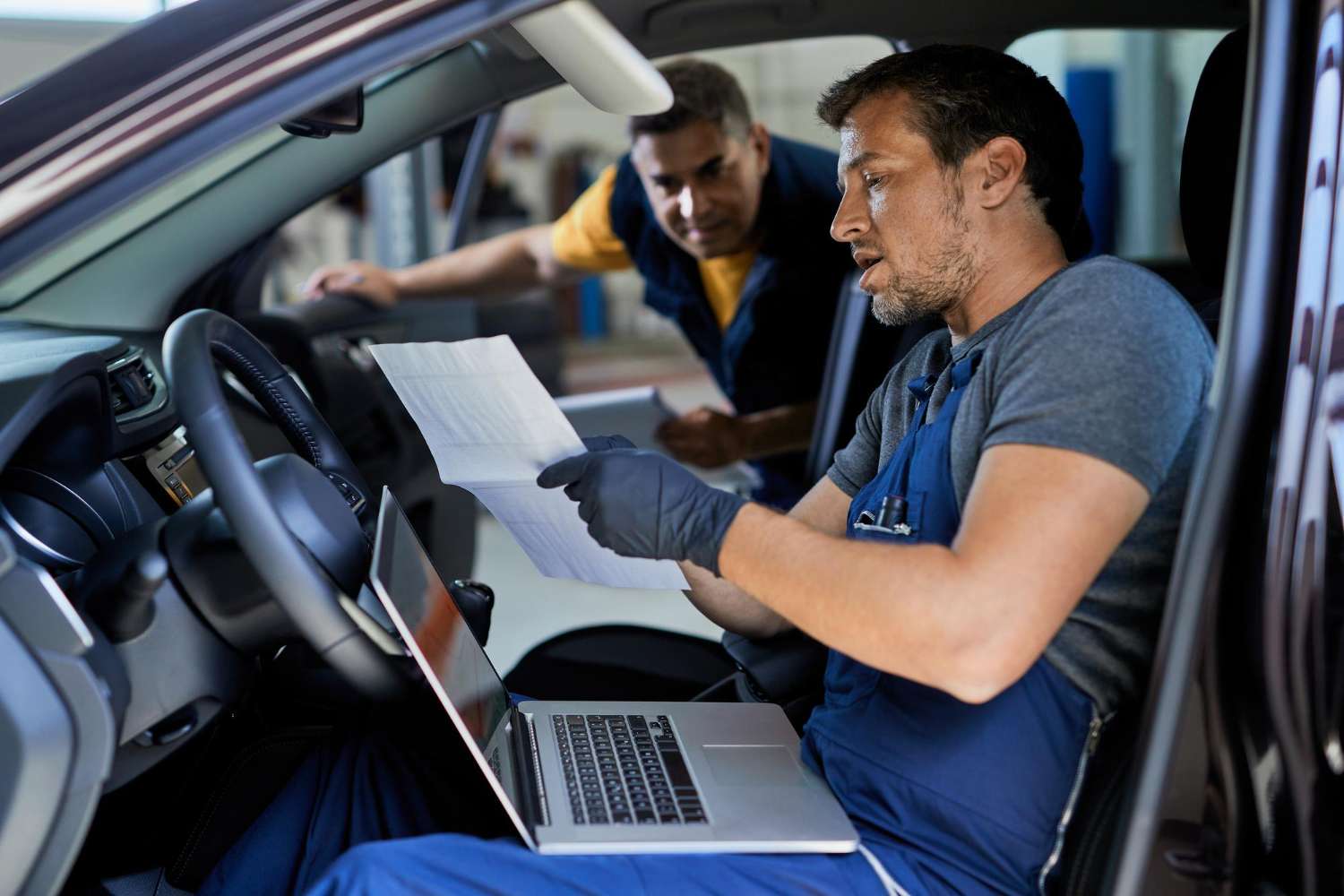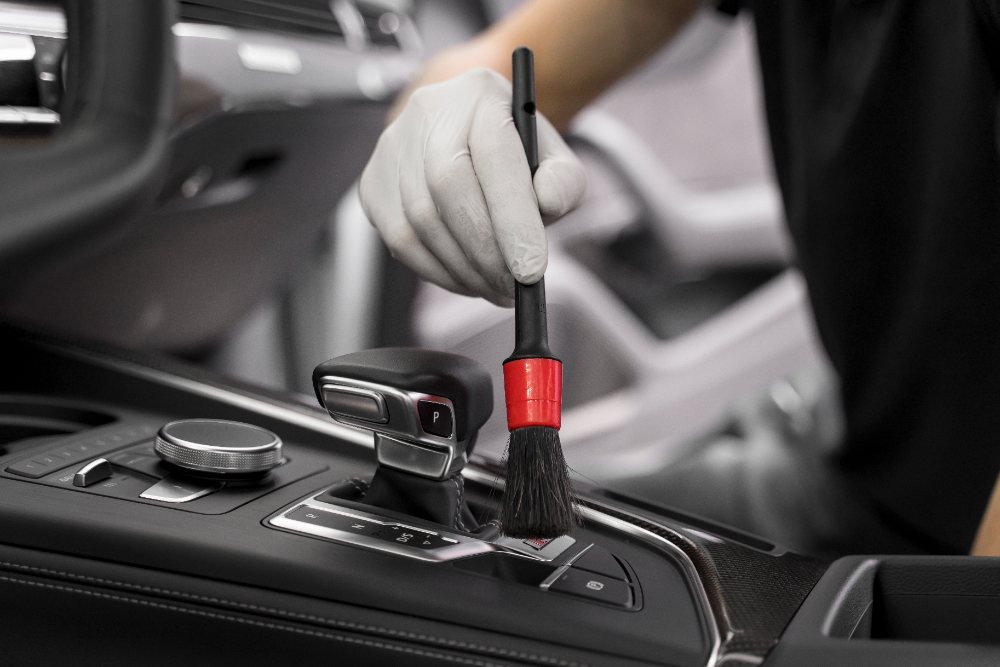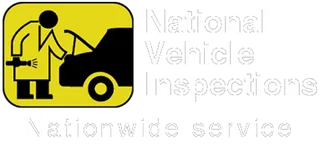Vehicle Inspections 101: Purpose, Benefits & Essentials
- September 26, 2025
- Blog

Vehicle inspection is the backbone of accident-free travelling. The cars we ride, the trucks we use for transport, every vehicle needs to be checked after a particular period to review its working condition through thorough mechanical and electrical check-ups.
These check-ups reveal any potential hazards due to failing or expiring components and save you from future, life-threatening road risks. So, there is no doubt that you always need to keep your vehicle in check. But even before that, you need to understand what goes into a reliable and comprehensive vehicle inspection.
Any unawareness about the issue might produce unreliable checks, as you don’t know which component to get checked on a priority basis. You might also end up getting your vehicle inspected by an unreliable company, as you don’t know how to qualify reliable check-ups.
But don’t you worry. We’re here to tell you about everything related to vehicle inspection – Why they matter and what to check during inspection.
Key Items That Must Pass Every Vehicle Inspection
A comprehensive vehicle inspection involves checking numerous components, including:
- Brake system: Pads, rotors, fluid leaks
- Tires: Tread depth, inflation, wear patterns
- Lights & signals: Headlights, brake lights, turn signals
- Steering & suspension: Tie rods, ball joints, shocks
- Emissions/pollutant levels: Per local regulations
- Fluid levels: Engine oil, coolant, brake fluid, transmission
- Battery health & electrical system
- Windshield integrity & wiper effectiveness
- Exhaust system: leaks or damage
1. Brake System (Brake Test)
You can’t go wrong with breaks. Otherwise, this is one of the significant causes of road accidents. The leaking lines, the worn pads, and all of its components need to be checked to prevent total brake failure. Otherwise, you’ll have to spend hundreds on emergency repairs.
To inspect the brakes, you need to press the brake pedal firmly. If you feel the pads are soft or air in lines or worn pads, then there might be an issue. For a visual check, look at the brake pads through the wheel openings. If the pad material is less than 1/4 inch thick, then replacement may be required.
2. Tires
The only part of the entire vehicle that needs to make contact with the road is the tires. If they are damaged or underinflated, then you’re welcoming a sudden accident due to an uncontrolled vehicle caused by the tires. The loss in fuel economy is another setback.
To inspect the tires, you need to use a reliable tread depth gauge. Insert the tread depth gauge into a main groove of the tire’s tread, making sure it reaches the bottom. If the reading falls below 4/32, then you may need to replace it. You also need to look for irregular damage patterns, as they could signify alignment problems.
3. Lights & Signals
Your lights are your eyes to watch the road carefully. The signals on your vehicle are for others to see and navigate the road accordingly. If either of these two starts malfunctioning, you’ll be driving confused on the road and will also confuse others. What’s the most significant threat? Fatal accidents and loss of lives. Research shows road accidents rise by as much as 30% when other drivers can’t anticipate your next move.
Thus, you need to check your lights and signals. To do this, you need to turn on headlights, blinkers, and brake lights. Walk around the vehicle to see if each light illuminates radiantly and squarely. If the lights brighten unevenly or not at all, replace them as soon as possible.
Also, check the turn signal; if they are clicking unevenly, replace the relay with a new one. If the signals are not clicking at all, this also signals the time for replacement.
4. Steering & Suspension
Any vehicle’s steering and suspension system consists of ball joints, shocks, or tie rods. Ball joints help wheels pivot for steering while absorbing the suspension movement. Tie rods transfer steering input to the wheels for direction, while shock absorbers reduce spring movement and control wheel travel for a seamless drive.
If any of these parts are damaged, then your vehicle’s control will be compromised, and this will cause tire damage. Steering components can also fail and result in a loss of control. To check these components, jack up the front end. Grab each wheel at 3 & 9 o’clock and wriggle. If you notice a loose or unstable feel, then understand that the tie rods or ball joints are damaged. Also, check shocks – look for fluid leaks or cracks and breaks in the mounting points. Perform replacements accordingly.
5. Emissions & Exhaust
Emissions compliance is a must in several regions. Failing these tests results in heavy fines (around $150–$300), unplanned repairs, or hindrance in registration. Carbon Monoxide can also reach the cabin due to a leaking exhaust, which can cause life-threatening health issues. Therefore, frequent check-ups of these systems are a must.
You can visually check the exhaust system for holes, rust, or slack clamps or use a roadside emissions analyser. Look underneath for black soot trails, which signify the fuel mixture issues.
6. Fluid Levels & Belts
Whether it’s engine oil, brake fluid, or coolant, if any of these fluids are contaminated, you’re compromising the life of your vehicle’s components through overheating or brake failure. Worn or cracked belts may snap, which can cause a breakdown.
To thoroughly examine fluid levels, check the oil using a dipstick. Look for the correct level and a clean amber colour. Also, examine the coolant reservoir for the correct fill line. Inspect the coolant reservoir to ensure fluid is at or near the proper fill line. There should be no more than ½ inch of movement when pressed at the midpoint.
7. Battery & Electrical System
Your battery is what your vehicles operate on. If it’s weak or rusted, you can get problems. Your car might break down on the way, leaving you stranded, particularly in severe temperatures. Alternator or starter problems often start with low voltage or weak connections.
To check the battery, you need to measure its voltage using a multimetre. If it reads around 12.6V at rest, then you’d need to check terminals for weathering, i.e., white/green powder. Then, you need to test the alternator output while the engine is running. It should read at ~13.8–14.2V.
8. Windshield & Wipers
Your car’s windshield is like what the cornea is to the eye. Just like the cornea, any visibility issues with the windshield due to cracks can impair your front view. If it’s raining, snowing, or dust-storming, and the wipers aren’t working, this will also hamper visibility.
If you find any cracks or chips larger than a quarter, then you need to repair or replace them instantly. You also need to turn on the wipers and spray washer fluid. This will ensure that the blades clear the entire windshield without streaking. Otherwise, you would have to spend around $200–$400.
9. Exhaust System
Exhaust leaks can allow dangerous carbon monoxide (a silent killer) to enter the cab. Moreover, corroded or damaged pipes also put extra strain on the engine, lowering performance and increasing fuel use.
To identify problems with the exhaust system, listen for unusual hissing or popping noises beneath the vehicle when the engine is running. Also check the pipes and muffler for signs of rust, holes, or loose mounts.
If left unaddressed, exhaust leaks can cause cabin poisoning and drive up fuel costs. Repairs often exceed $300 once corrosion has fully taken hold.

What to Look for When Inspecting Electric & Hybrid Vehicles?
If you own an electric or hybrid vehicle, then the inspection requirements change a little:
- Battery Health: Check the battery health and its state-of-charge using onboard diagnostics or a dedicated tester. You need to look for swelling or leaks in battery packs.
- High-Voltage System Warnings: Check the dashboard for warning lights. If any of them remain on, especially an HV (High Voltage) fault code, then get your vehicle checked by certified EV technicians.
- Brake Regeneration Systems: The regenerative braking in EV cars slows it down using the electric motor instead of the brake pads. Therefore, you cannot expect the brake pads to wear down evenly, as the regenerative brakes mask their wear. Even if the pads look thick, they could have patchy spots or unseen damage. That’s why you still need to check them carefully.
How to Adjust Vehicle Inspections for Weather Changes
Every season has its own unique effects on your vehicle. Therefore, you must examine your vehicle considering the seasonal changes.
Winter Preparation:
- Check if your antifreeze (coolant) keeps balanced concentrations (50/50 mix of water and antifreeze), examine the heater core hoses, and switch to winter-rated windshield fluid to keep your windshield clear in winter. (Regular fluid can freeze in low temperatures)
- Consider replacing your standard tires with special winter-rated ones for better grip. Use snow chains with your tires (if compatible) if you live in a heavy snowfall region.
Summer Preparation:
- Check the coolant and radiator for leaks around hoses and loose clamps.
- Thoroughly check belt tension as heat causes it to crack faster in the summer. Clear away any leaves, dirt, or bugs on the A/C condenser fins (if any).
Spring/Fall:
- Spring: Winter road salt can rust the underbody and exhaust. In spring, check underneath the car for rust or corrosion and wash it off if needed.
- Fall: Make sure your heater and defroster work properly before cold weather sets in. Also Replace the interior air filter so it’s clean before pollen or dust buildup affects airflow.`
Comparing Paper Checklists and Mobile Inspection Apps
Perks
- Affordable option
- Simple to use
- No special training required.
Downsides
- Prone to mistakes
- Lacks photo or video evidence
- Records can be misplaced.
Digital Inspection Apps (DVIRs):
- Automatic Record-Keeping: Every inspection is time-stamped and securely stored in the cloud.
- Real-Time Photo/Video Capture: Capture images or footage instantly to document issues with
- Easier Customer Communication: Share inspection reports or work orders instantly via email or SMS, keeping customers informed in real time.
How Frequent Inspections Reduce Fleet Risk?
Most fleets carry out a daily pre-trip walk-around, focusing on essentials like brakes, lights, and tire pressure. In addition, you need to perform a comprehensive examination every 30 days or 10,000 miles—whichever comes first.
Why are these intervals important?
- Component Wear: Brake pads and tires typically wear at steady rates, with 10,000 miles often marking the point where pads fall below 25% thickness.
- Warranty Coverage: Several OEM warranties align with 10,000-mile service intervals, ensuring parts are inspected within coverage periods.
- Regulatory Compliance: Annual or semi-annual inspections are usually tied to mileage or calendar milestones, helping fleets stay compliant.
In-House or Outsourced: Which Inspection Strategy Is Best?
- In-House Checks ($100–$150/vehicle/month):
a) Advantage:
- Provides instant feedback
- Drivers and mechanics can address problems right away.
b) Disadvantage:
- Needs skilled personnel, proper tools, and careful scheduling to manage
- Outsourced Inspections ($200–$250/inspection):
a) Advantage:
- Certified inspectors take care of complex inspections (such as DOT or state-required checks), reducing the workload on in-house teams.
b) Disadvantage:
- Appointments may come with longer wait times and added travel costs.
Daily Walkarounds vs. Routine Fleet Inspections
Regular Walk-Around Checks (5–15 minutes):
- Brakes: Press the brake pedal and check for softness or reduced resistance.
- Tires: Measure air pressure and look for visible damage such as cuts or bulges.
- Lights & Signals: Ensure that headlights, brake lights, and turn signals are functioning properly.
Comprehensive Scheduled Inspections: Conducted every 30 days or 10,000 miles, lasting 30–60 minutes:
- Steering & Suspension: Examine tie rods, ball joints, and shock absorbers.
- Fluids & Belts: Review engine oil, coolant, brake fluid, and inspect belt tension.
- Emissions & Exhaust: Ensure regulatory compliance and check for system leaks.
- Battery & Electrical: Measure battery output and inspect for corroded terminals.
- Underbody & Frame: Look for rust, wear, or structural damage that may affect safety.
3 Fleet Inspection Checks You Might Be Missing
1. Windshield Wiper Effectiveness
Many fleets only check the wipers visually but don’t actually turn them on. The rule is that if the wipers leave streaks or make noise, they should be replaced.
2. Valve Stem & Cap Condition
If you’ve got cracked stems or missing caps, they can cause gradual leakage, which you wouldn’t be able to detect through a pressure inspection.
3. Emergency Equipment Expiration
Several fire extinguishers and first-aid kits sit expired and forgotten until an emergency occurs.
The Real Price of Skipping Maintenance & Failing Checks
Issue | Potential Consequence | Estimated Cost Impact |
Low Tire Pressure | Tire damage, poor mileage | $200 (tire + downtime) |
Damaged Brake Pads | Brake malfunction, delayed braking | $500 (wreck repair) |
Defective Headlights | Low-visibility accidents, rule noncompliance | $150 (repair + fine) |
Fluid Leakages (Engine) | Cooling failure, engine lock-up | $1,200 (engine rebuild) |
The Bottom Line…
More than just a requirement, vehicle inspection is paramount to your on-road safety. With the advent of the digital vehicle inspection system, the entire process has undergone a significant transformation, providing a more transparent, efficient, and engaging experience for vehicle owners.

